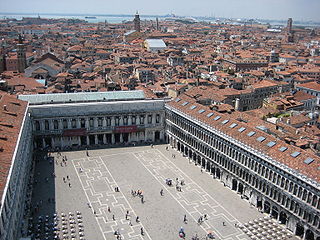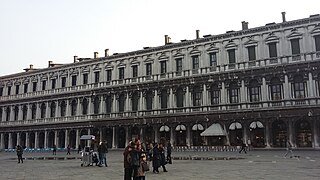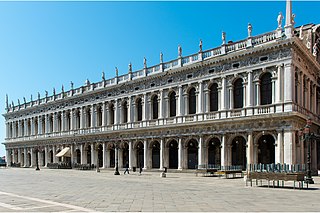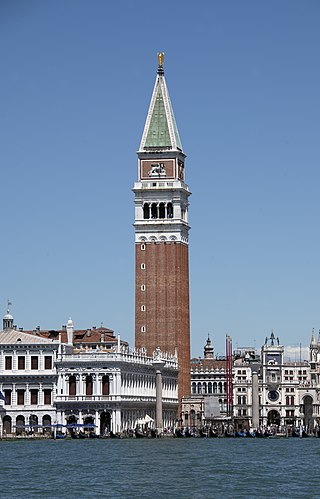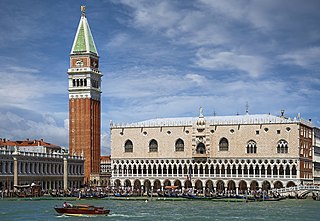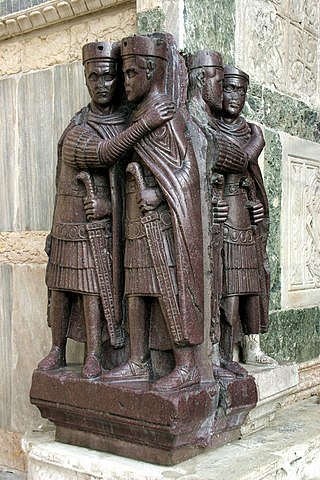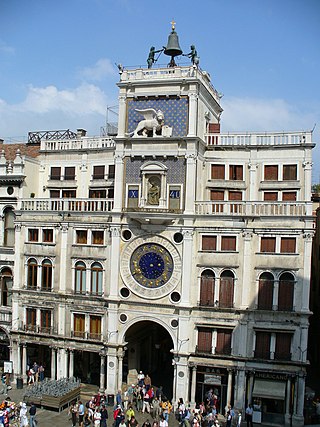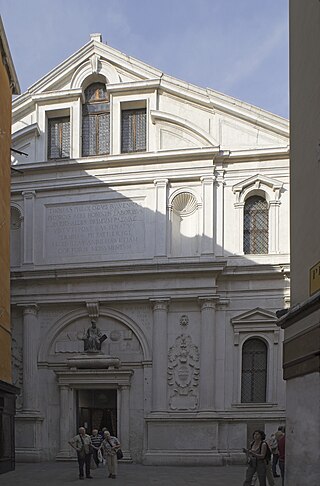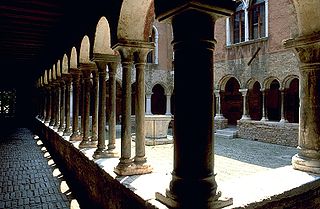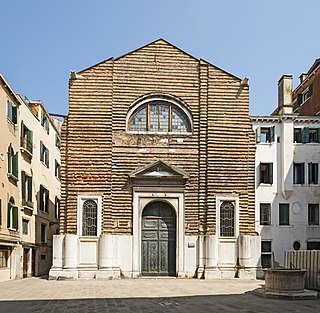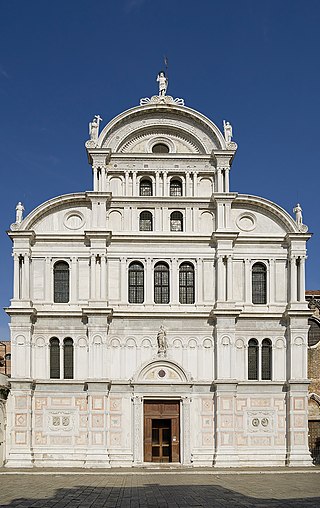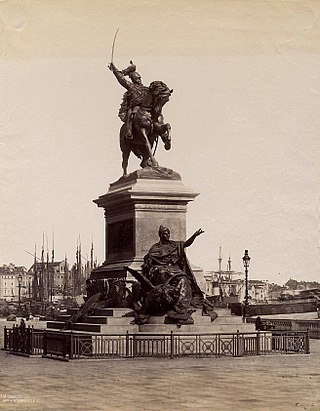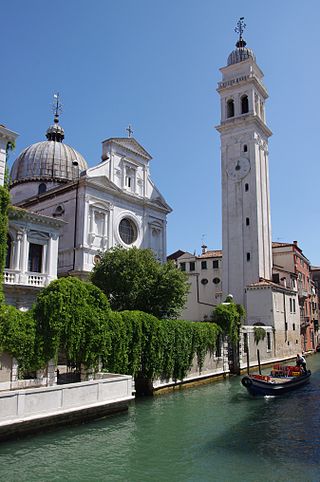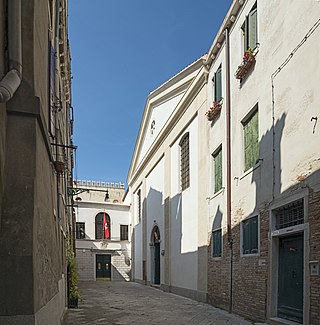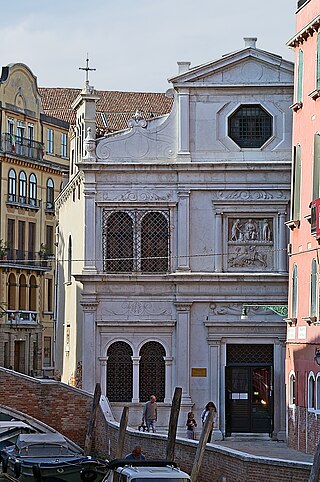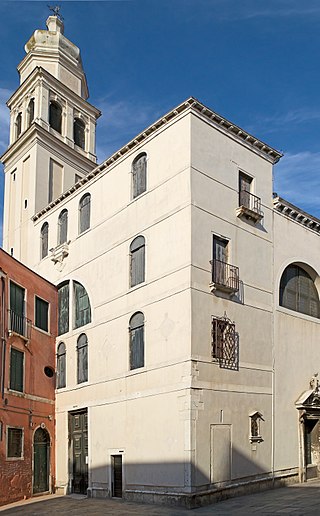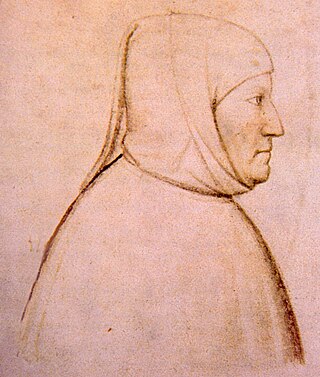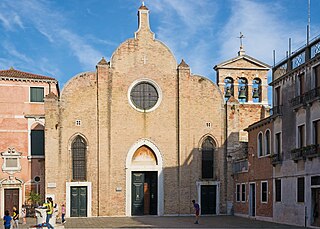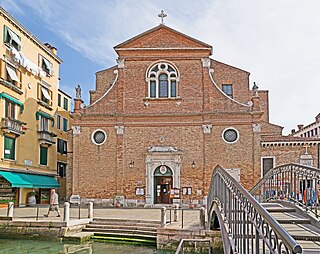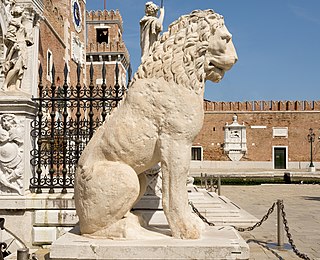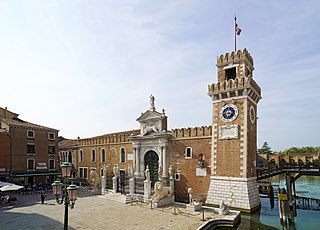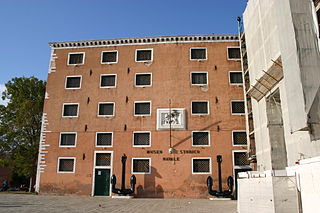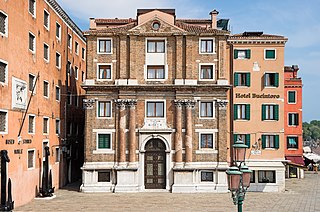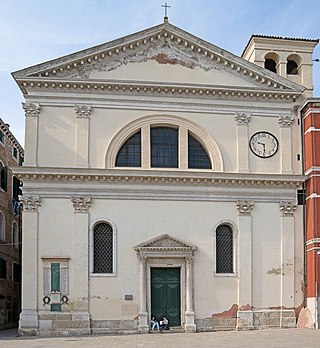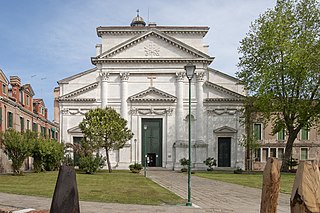Self-guided Sightseeing Tour #1 in Venice, Italy
Legend
Guided Free Walking Tours
Book free guided walking tours in Venice.
Guided Sightseeing Tours
Book guided sightseeing tours and activities in Venice.
Tour Facts
5.8 km
91 m
Experience Venice in Italy in a whole new way with our free self-guided sightseeing tour. This site not only offers you practical information and insider tips, but also a rich variety of activities and sights you shouldn't miss. Whether you love art and culture, want to explore historical sites or simply want to experience the vibrant atmosphere of a lively city - you'll find everything you need for your personal adventure here.
Activities in VeniceIndividual Sights in VeniceSight 1: Chiesa di San Vidal
San Vidal is a former church, and now an event and concert hall located at one end of the Campo Santo Stefano in the Sestiere of San Marco, where it leads into the campiello San Vidal, and from there to the Ponte dell'Accademia that spans the Grand Canal and connects to the Sestiere of Dorsoduro, Venice, Italy.
Sight 2: Procuratie Nuove
The Procuratie are three connected buildings along the perimeter of Saint Mark's Square in Venice, Italy. Two of the buildings, the Procuratie Vecchie and the Procuratie Nuove, were constructed by the procurators of Saint Mark, the second-highest dignitaries in the government of the Republic of Venice, who were charged with administering the treasury of the Church of Saint Mark as well as the financial affairs of state wards and trust funds established on behalf of religious and charitable institutions.
Sight 3: Venice National Archaeological Museum
The National Archaeological Museum is a museum located right on Piazza San Marco in Venice.
Wikipedia: Venice National Archaeological Museum (EN), Website
Sight 4: Marciana National Library
The Marciana Library or Library of Saint Mark is a public library in Venice, Italy. It is one of the earliest surviving public libraries and repositories for manuscripts in Italy and holds one of the world's most significant collections of classical texts. It is named after St Mark, the patron saint of the city.
Sight 5: Column of Saint Theodore
The Columns of San Marco and San Teodoro are two columns in Piazza San Marco, Venice, Italy. They comprise the Column of San Marco, also known as the Column of the Lion, as well as the Column of San Teodoro. The statue of the Lion of Venice, which symbolises Mark the Evangelist, surmounts the Column of the Lion. The Column of San Teodoro is topped by a statue of Theodore Tiron, who was the patron saint of Venice before he was succeeded by Saint Mark. Both columns were likely erected either between 1172 and 1177 by Nicolò Barattieri, or sometime around 1268.
Sight 6: St Mark's Campanile
St Mark's Campanile is the bell tower of St Mark's Basilica in Venice, Italy. The current campanile is a reconstruction completed in 1912, the previous tower having collapsed in 1902. At 98.6 metres (323 ft) in height, it is the tallest structure in Venice and is colloquially termed "el paròn de casa". It is one of the most recognizable symbols of the city.
Sight 7: Doge's Palace
The Doge's Palace is a palace built in Venetian Gothic style, and one of the main landmarks of the city of Venice in northern Italy. The palace was the residence of the Doge of Venice, the supreme authority of the former Republic of Venice. It was built in 1340 and extended and modified in the following centuries. It became a museum in 1923 and is one of the 11 museums run by the Fondazione Musei Civici di Venezia.
Sight 8: St Mark's Basilica
The Patriarchal Cathedral Basilica of Saint Mark, commonly known as St Mark's Basilica, is the cathedral church of the Patriarchate of Venice; it became the episcopal seat of the Patriarch of Venice in 1807, replacing the earlier cathedral of San Pietro di Castello. It is dedicated to and holds the relics of Saint Mark the Evangelist, the patron saint of the city.
Sight 9: Portrait of the Four Tetrarchs
The Portrait of the Four Tetrarchs is a porphyry sculpture group of four Roman emperors dating from around 300 AD. The sculptural group has been fixed to a corner of the façade of St Mark's Basilica in Venice, Italy since the Middle Ages. It probably formed part of the decorations of the Philadelphion in Constantinople, and was removed to Venice in 1204 or soon after.
Sight 10: Cavalli di San Marco
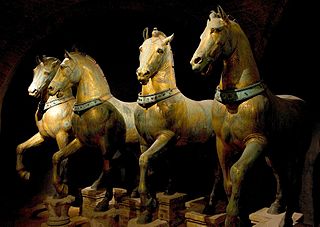
The Horses of Saint Mark, also known as the Triumphal Quadriga or Horses of the Hippodrome of Constantinople, is a set of bronze statues of four horses, originally part of a monument depicting a quadriga. The horses were placed on the facade, on the loggia above the porch, of St Mark's Basilica in Venice, northern Italy, after the sack and looting of Constantinople in 1204. They remained there until looted by Napoleon in 1797 but were returned in 1815. The sculptures have been removed from the facade and placed in the interior of St Mark's for conservation purposes, with replicas in their position on the loggia.
Sight 11: St Mark's Clocktower
The Clock Tower in Venice is an early Renaissance building on the north side of the Piazza San Marco, at the entrance to the Merceria. It comprises a tower, which contains the clock, and lower buildings on each side. It adjoins the eastern end of the Procuratie Vecchie. Both the tower and the clock date from the last decade of the 15th century, though the mechanism of the clock has subsequently been much altered. It was placed where the clock would be visible from the waters of the lagoon and give notice to everyone of the wealth and glory of Venice. The lower two floors of the tower make a monumental archway into the main street of the city, the Merceria, which linked the political and religious centre with the commercial and financial centre. Today it is one of the 11 venues managed by the Fondazione Musei Civici di Venezia.
Sight 12: Chiesa di San Zulian
The Chiesa di San Giuliano, commonly called San Zulian in the Venetian dialect, is a church on the Merceria, the main shopping street of Venice, in the parish of San Salvador, Venice, Italy.
Sight 13: Museo Diocesano
The Diocesan Museum of Sacred Art "Sant'Apollonia" is a museum in Venice, commissioned by the patriarch Albino Luciani, opened to the public in 1977 on the occasion of the exhibition dedicated to the restoration of the bronze horses of St. Mark's Basilica, it was officially inaugurated on October 4, 1980. It is located in the monastery of the Benedictines once on the island of Ammiana, near Torcello, which has now disappeared. The Diocesan Museum of Sacred Art has been closed since 2019 and has not been transferred to the Pinacoteca Manfrediniana.
Sight 14: Bridge of Sighs
The Bridge of Sighs is a bridge in Venice, Italy. The enclosed bridge is made of white limestone, has windows with stone bars, passes over the Rio di Palazzo, and connects the New Prison to the interrogation rooms in the Doge's Palace. It was designed by Antonio Contino, whose uncle Antonio da Ponte designed the Rialto Bridge. It was built in 1600.
Sight 15: Chiesa di San Giovanni Nuovo
San Giovanni Nuovo is a Roman Catholic church in the campo of the same name, in the sestiere of Castello, Venice, Italy.
Sight 16: Chiesa di San Zaccaria
The Church of San Zaccaria is a 15th-century former monastic church in central Venice, Italy. It is a large edifice, located in the Campo San Zaccaria, just off the waterfront to the southeast of Piazza San Marco and St Mark's Basilica. It is dedicated to St. Zechariah, the father of John the Baptist.
Sight 17: Vittorio Emanuele II
The Monument to Victor Emmanuel II, known by the Venetians simply as the monument, located in Riva degli Schiavoni, in Castello, Venice, Italy. It is an equestrian statue made in 1887 by the Roman sculptor Ettore Ferrari.
Sight 18: Chiesa di Santa Maria della Pieta
The church of Santa Maria della Pietà or della Visitazione is a prominent church in the sestiere of Castello in Venice, Italy. It is sited on the Riva degli Schiavoni, a short walk from the Doge's Palace.
Sight 19: Chiesa di San Giorgio dei Greci
San Giorgio dei Greci is a church in the sestiere (neighborhood) of Castello, Venice, northern Italy. It was the center of the Scuola dei Greci, the Confraternity of the Greeks in Venice. Around this period there was a similar church in Naples called Santi Pietro e Paolo dei Greci. There was also a Greek Brotherhood of Naples.
Sight 20: Chiesa di San Giovanni di Malta
San Giovanni di Malta, also known as San Giovanni del Tempio or San Giovanni dei Furlani, is a Roman Catholic church in the Castello sestiere of Venice, Italy, dedicated to John the Baptist. It is believed to have been established by the Knights Hospitaller sometime after 1187, although it is sometimes linked to the Knights Templar. The present building was constructed between 1498 and 1505, and it is located adjacent to a priory. The property was taken over by the state in 1806 and the church was closed in 1810, but in 1841 it was handed over to the Sovereign Military Order of Malta, who reopened the church in 1843.
Sight 21: Scuola di San Giorgio degli Schiavoni
The Scuola di San Giorgio degli Schiavoni in Venice, northern Italy, was one of the city's confraternities, a scuola piccola located in the sestiere (neighborhood) of Castello, Venice. Its building has been preserved.
Sight 22: Chiesa di Sant'Antonin
Sant'Antonin is a church in the sestiere of Castello in Venice, Italy.
Sight 23: Francesco Petrarca
Francis Petrarch, born Francesco di Petracco, was a scholar from Arezzo and poet of the early Italian Renaissance and one of the earliest humanists.
Sight 24: Chiesa di San Giovanni in Bragora
San Giovanni in Bragora is a church in Venice, Italy, located in the sestiere of Castello.
Sight 25: Chiesa di San Martino Vescovo
The church of San Martino is a religious building in the city of Venice, located in the Castello district, not far from the Arsenal of Venice.
Sight 26: Leoni
The Piraeus Lion is one of four lion statues on display at the Venetian Arsenal, Italy, where it was displayed as a symbol of Venice's patron saint, Saint Mark. The statue is made of white marble and stands some 3 m (9 ft.) high. It is particularly noteworthy for two lengthy runic inscriptions on its shoulders and flanks; these were likely carved by Scandinavians sometime in the 11th century AD.
Sight 27: Arsenale di Venezia
The Venetian Arsenal is a complex of former shipyards and armories clustered together in the city of Venice in northern Italy. Owned by the state, the Arsenal was responsible for the bulk of the Venetian Republic's naval power from the Late Middle Ages to the early modern period. It was "one of the earliest large-scale industrial enterprises in history".
Sight 28: Historic Naval Museum
The Museo Storico Navale is a naval history museum located in the Castello district of Venice, near the Venetian Arsenal. The museum was established by the Regia Marina in 1919. Its collections include items relating to the naval and maritime history of Venice, and it has a large number of ship models and weapons on display.
Sight 29: Ex Chiesa di San Biagio
San Biagio is a church dedicated to Saint Blaise, in the sestiere of Castello in Venice, northern Italy.
Sight 30: Chiesa di San Francesco di Paola
San Francesco di Paola is a Roman Catholic church in Via Garibaldi in the Sestiere of Castello in Venice, Italy.
Sight 31: Basilica di San Pietro di Castello
Get Ticket*The Basilica di San Pietro di Castello, commonly called San Pietro di Castello, is a Roman Catholic minor basilica of the Patriarch of Venice located in the Castello sestiere of the Italian city of Venice. The present building dates from the 16th century, but a church has stood on the site since at least the 7th century. From 1451 to 1807, it was the city's cathedral church, though hardly playing the usual dominant role of a cathedral, as it was overshadowed by the "state church" of San Marco and inconveniently located. During its history, the church has undergone a number of alterations and additions by some of Venice's most prominent architects. Andrea Palladio received his first commission in the city of Venice from the Patriarch Vincenzo Diedo to rebuild the facade and interior of St Pietro, but Diedo's death delayed the project.
Share
Disclaimer Please be aware of your surroundings and do not enter private property. We are not liable for any damages that occur during the tours.
GPX-Download For navigation apps and GPS devices you can download the tour as a GPX file.

